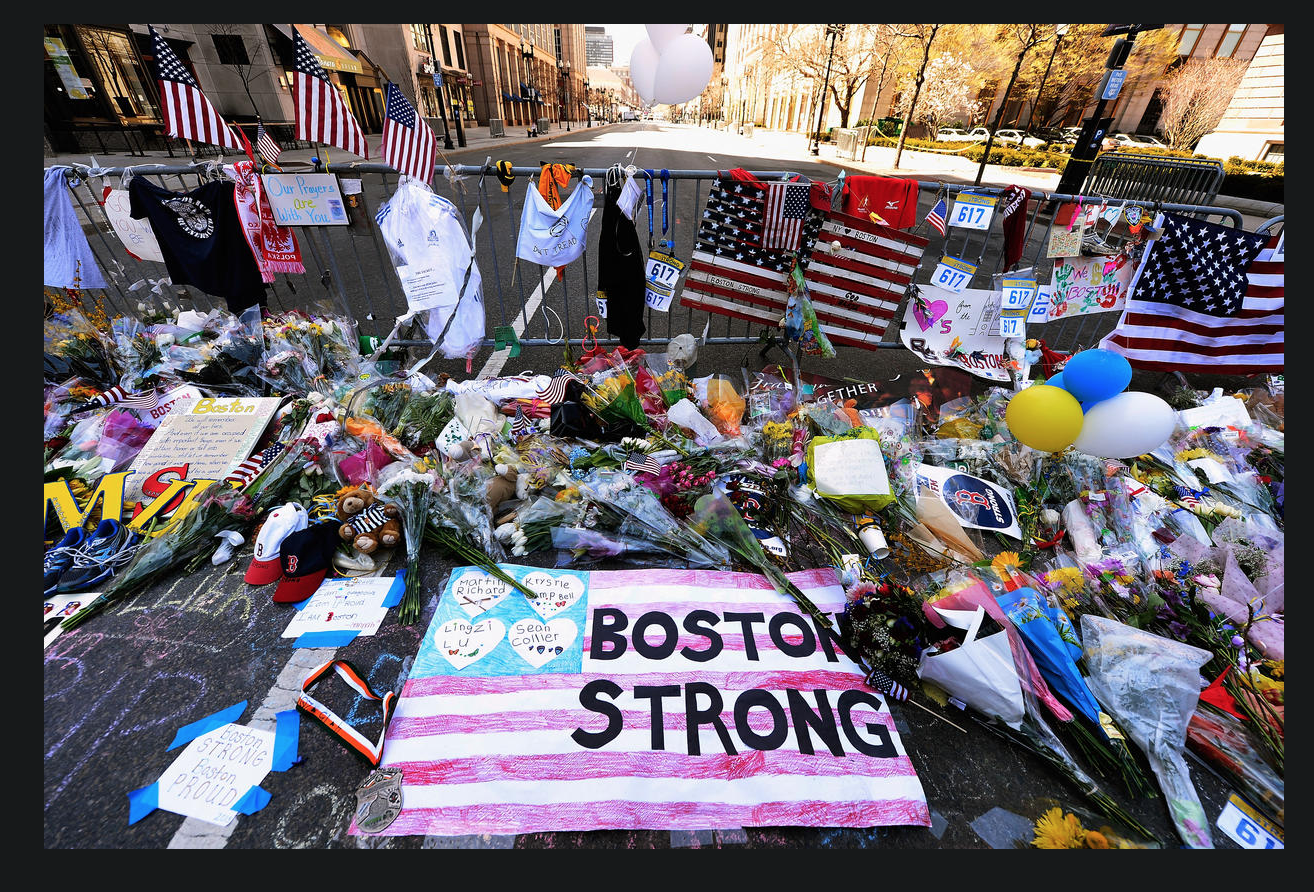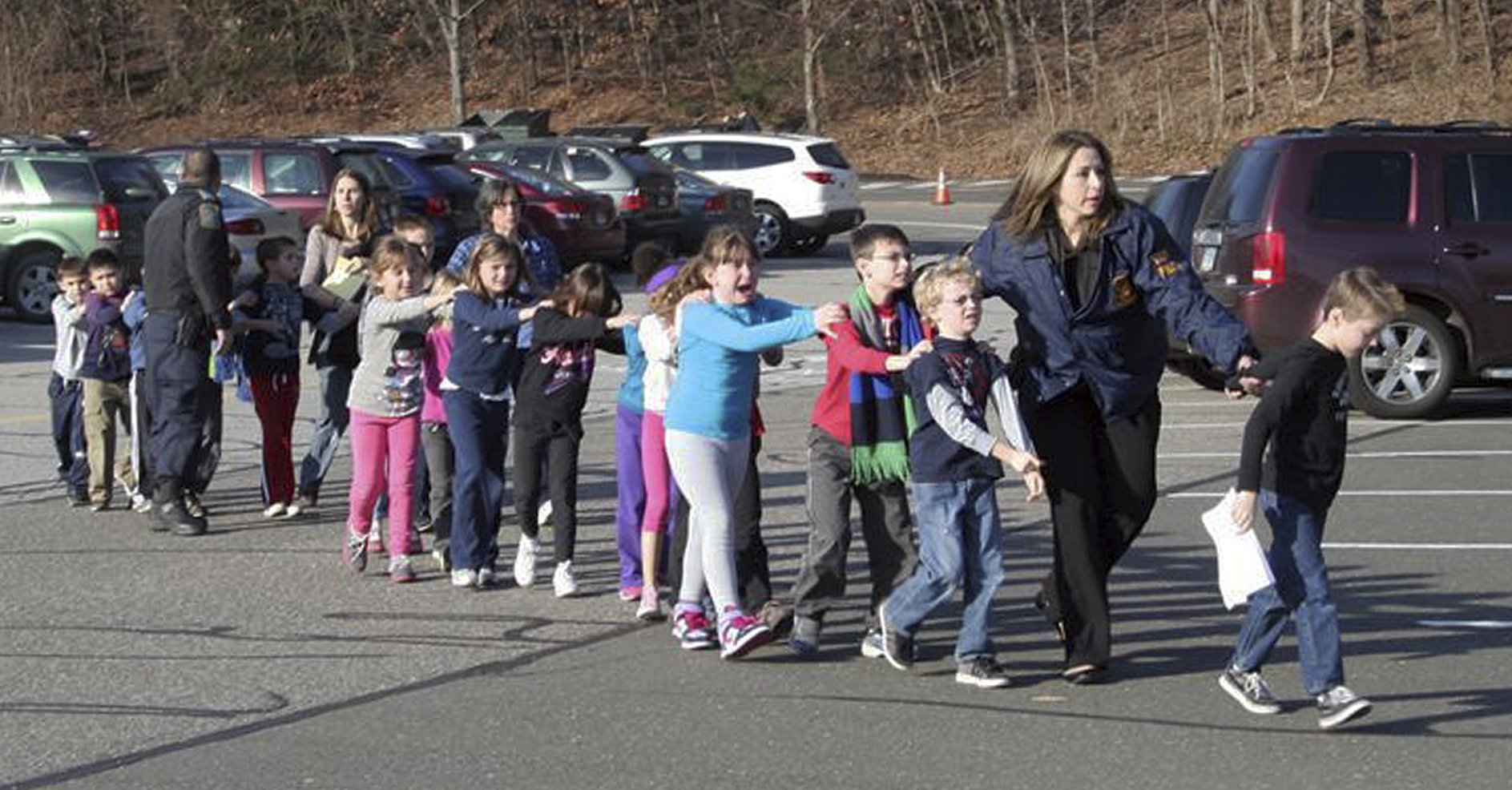Lesson 11: Community Mental Health Problems: Violence
Attention
World war. Genocide. Covert military action. Bombings. Code words for humans at their worst. Sigmund Freud attempted to address the underlying problem for violence and aggression. In addition to all those forces that are social and hereditary, some are creative, others are destructive.
How do we explain the "unexplainable?" On April 15 2013, while the whole world watched the Boston Marathon, two explosions were set off. Death, injury, and the trauma of witnessing the destruction has not passed. One of the runners, an orthopedic surgeon, realizing what had happened, changed course and headed for the hospital where has was a staff specialist. He knew he would be needed. He was. It leaves us wondering why some would purposefully harm others.

Watch the video of Mark Walberg talking about the events of the Boston Marathon Bombing (12/17/2016) and his movie Patriot's Day (released in 2017):
https://www.youtube.com/watch?v=HNLjHvLiY1o
- - - - - - - - - - - - - - - - - - - - - - - - - - - - - - - - - - - - - - - - - - - - - - - - - - - - - - - -
Survivors tell their stories:
https://www.bostonglobe.com/metro/2015/03/04/survivors-tell-stories-carnage-boston-marathon-finish-line/texXqP6ajJ2iYHnctzp76I/story.html
- - - - - - - - - - - - - - - - - - - - - - - - - - - - - - - - - - - - - - - - - - - - - - - - - - - - - - - -
Here is some additional reading about the Boston Marathon events focused on lessons learned:
http://www.disaster-resource.com/index.php?option=com_content&view=article&id=2147
Learning Outcomes
Upon completion of this lesson's material, students will be able to:
- Gain an understanding of the different types of violence.
- Discuss the problem of violence in American communities.
Teaching
Reading
Read three articles:
- Why America Is More Violent Than Other Democracies (http://www.usnews.com/opinion/articles/2011/12/23/why-america-is-more-violent-than-other-democracies)
- Violence: The American Way of Life (http://www.globalresearch.ca/violence-the-american-way-of-life/5318698)
- Growing up in Communities Affected by War - APA citation: Ispanovic-Radojkovic, V. (2005). Growing up in communities affected by war. Promoting The Psychosocial Well Being Of Children Following War & Terrorism, 4(1), 171-177.
While it may come as no surprise that children observing aggressive adult behavior might imitate, or increase acting-out behavior post-observation, the real surprise was how little prosocial models, or, for that matter, no model AT ALL, resulted in acting-out nonetheless. Could it be the Bandura et.al., hit on something more fundamental than imitation, something instead about human nature?
Milgram's research may equally appear transparent and understandable, insofar as adults were simply doing what they were told to do, punish a mistake every time a learner with whom they were paried, makes a mistake on a word list. But, the real question may instead have been when and at what point would the "teacher" administering the shocks, refuse to continue?
Recent publication of a book by Gina Perry (2013), entitled the "Behind the Shock Machine," documents some real and lasting psychological trauma experienced by the so-called teachers in Milgram's experiment.
If both the above are to be correctly understood, witnessing, imitating, doing violence can be as disruptive as being the victim one's self. Emotionally "strong" experiences leave strong memories. Very emotional and unusal experiences, i.e., witnessing, or being the victim of violence, leaves VERY strong memories.
Lecture
I was having breakfast with a friend of mine from the next town over. Little did I know what his relationship was to the catastrophe at Sandy Hook Elementary School, in Newtown, Connecticutt. Over 40 years ago, when he and his wife came to Maine to raise a family and start a business, my friend had been an elemenatry school student at the school as a child. I have to tell you, it brought me up short. And yes, he does know grandparents and others from that community to this day. The trauma is profound. It is a spreading circle, like a ripple in the water from a pebble thrown.

Children being escorted away from Sandy Hook Elementary school
KVCC has had meetings, required, on school violence and emergency, to bring faculty up-to-speed for what to do if threat materializes on campus. I have noticed that at other school where I teach, in particular, off-campus sites for college courses occrring in public schools, that great pain has been taken to mark classrooms, both inside buildings, as well as from outside. First responders need to know where they are going. Seconds can make all the difference in the world. Additionaly for well over 40 years I have been watching the pattern of school shootings, attacks on parents, peers, principals, and so on.
Violence can also be directed to children, by parents or siblings, elders by THEIR own adult offspring, spouses to spouse or significant other, as well as complete strangers with criminal intent, either property offenses, or, to do intentional physical harm. No boundaries, or age prerequisite.
There are nine distinct forms of violence and abuse (from http://www.gov.nl.ca/VPI/types/#5):
1. Physical violence
Can look like slapping, hitting, choking, stabbing, burning.
2. Sexual violence
Can look like rape, harassment, being forced to watch pornography. Can be perpetrated by someone known to the victim or a stranger.
3. Emotional violence
Emotional violence occurs when someone says or does something to make a person feel stupid or worthless. Can look like controlling behaviour, isolating someone from friends, family and culture.
4. Psychological violence
Psychological violence occurs when someone uses threats and causes fear in a person to gain control. Can look like making threats to commit suicide or self-harm or threats to destroy possessions.
4. Spiritual violence
Not allowing the person to follow her or his preferred spiritual or religious tradition; Forcing a spiritual or religious path or practice on another person; Belittling or making fun of a person’s spiritual or religious tradition, beliefs or practices; and using one’s spiritual or religious position, rituals or practices to manipulate, dominate or control a person.
5. Cultural violence
Cultural violence occurs when a person is harmed as a result of practices that are part of her or his culture, religion or tradition. Feelings of superiority/inferiority based on class, race, sex, religion, and nationality are inculcated in us as children and shape our assumptions about us and the world. They convince us this is the way things are and they have to be.
6. Verbal Abuse
The excessive use of language to undermine someone's dignity and security through insults or humiliation, in a sudden or repeated manner. Withholding important information; Unreasonably ordering around; Talking unkindly about death to a person; and, telling a person she or he is worthless or nothing but trouble.
7. Financial Abuse
Can look like controlling finances, making decisions about how money is spent, taking money or possessions without permission; Giving an allowance and then requiring justification for all money spent.
8. Neglect
Neglect occurs when someone has the responsibility to provide care or assistance for you but does not. Physical neglect presents as a disregarding necessities of daily living, including failing to provide adequate or necessary: nutrition/fluids, shelter, clean clothes and linens, social companionship, failing to turn a bed-ridden person frequently to prevent stiffness and bed-sores. Medical neglect may include ignoring special dietary requirements, not providing needed medications, not calling a physician, not reporting or taking action on a medical condition, injury or problem and not being aware of the possible negative effects of medications.
Interventions
Click HERE to read a really good perspective on Primary, Seconday, and Tertiary Prevention. This is generic, so you can apply it to just about any circumstance.
Assessment
Lesson 11 Quiz
- Compare and contrast the three articles you read at the beginning of this Lesson. Share what you have learned from these readings.
- Select two types of violence, describe what each would look like and how you would intervene to assist a client.
Lesson 11 Discussion
Share your thoughts about what happened in Boston, at the Boston Marathon. Why do you think this happened? What have we learned from this event?